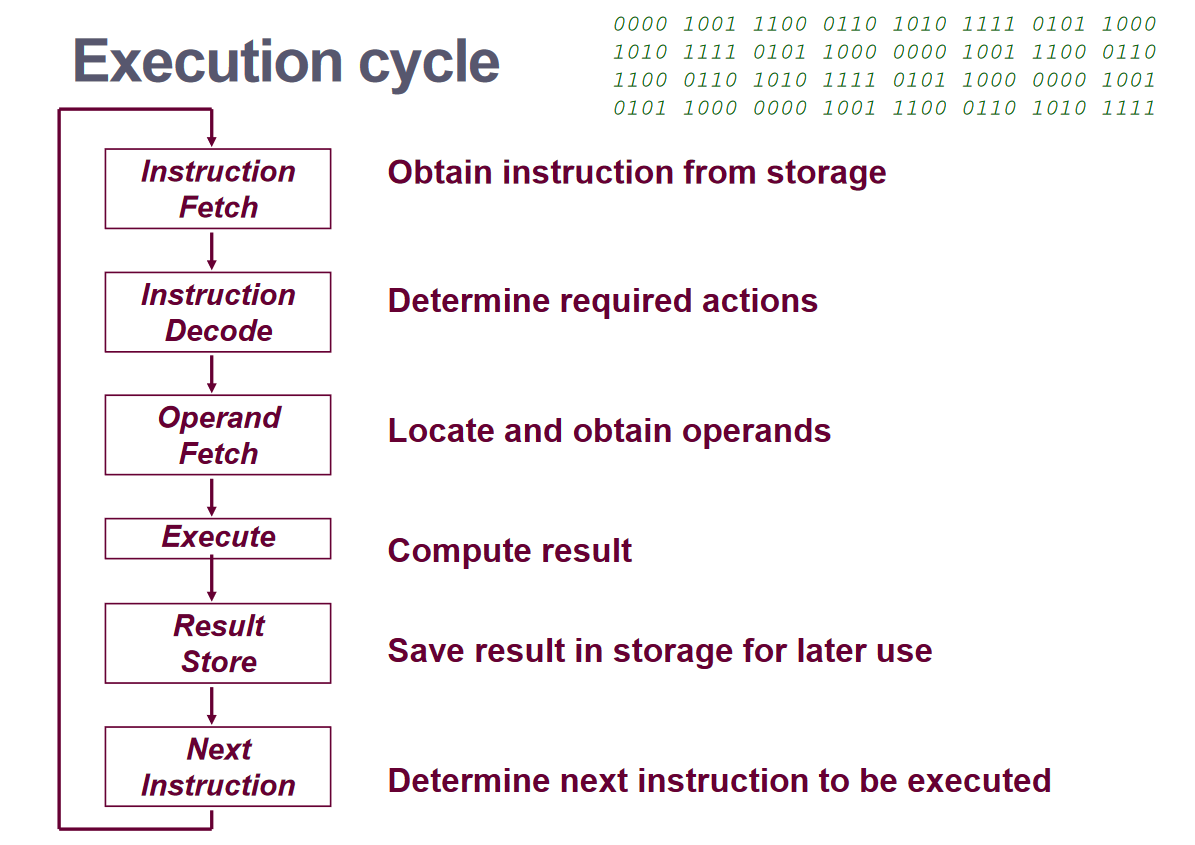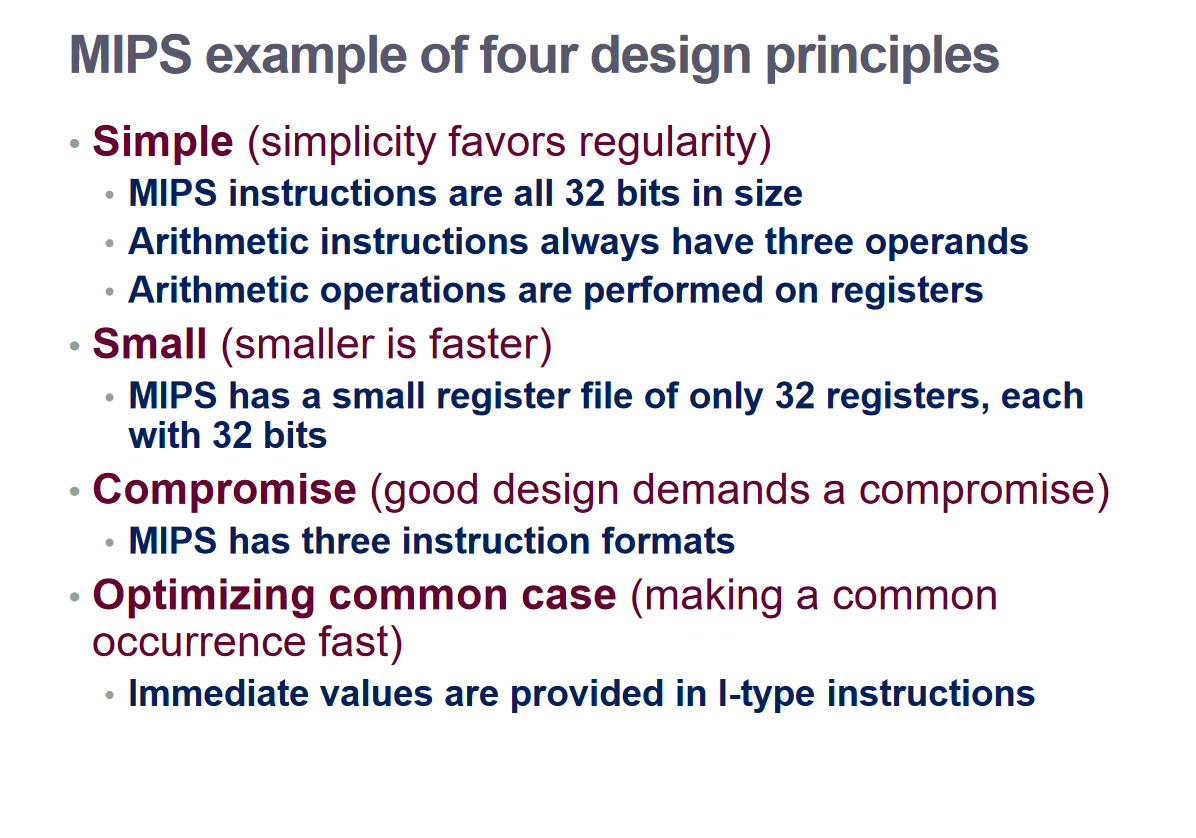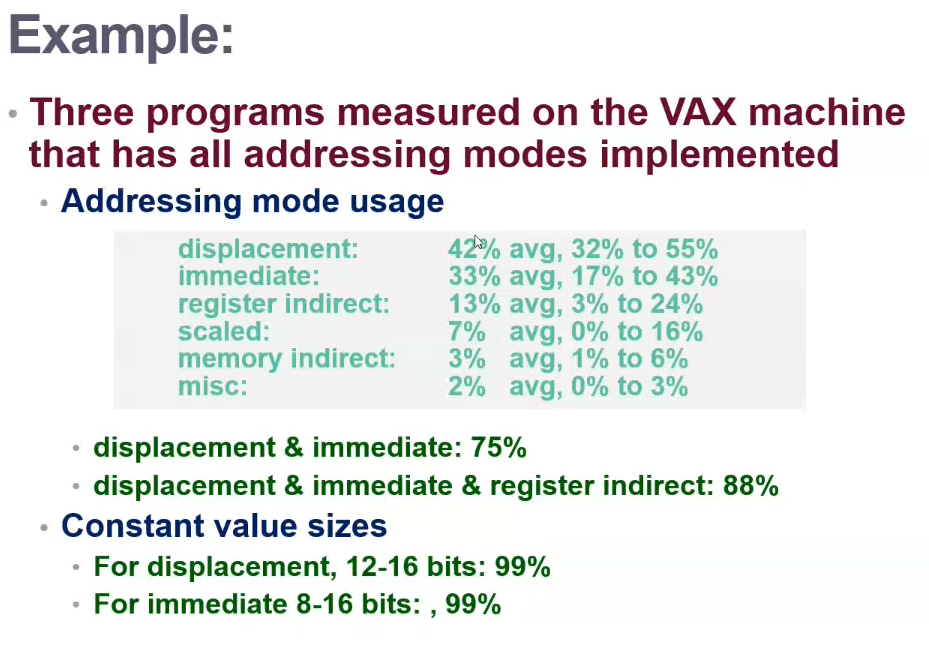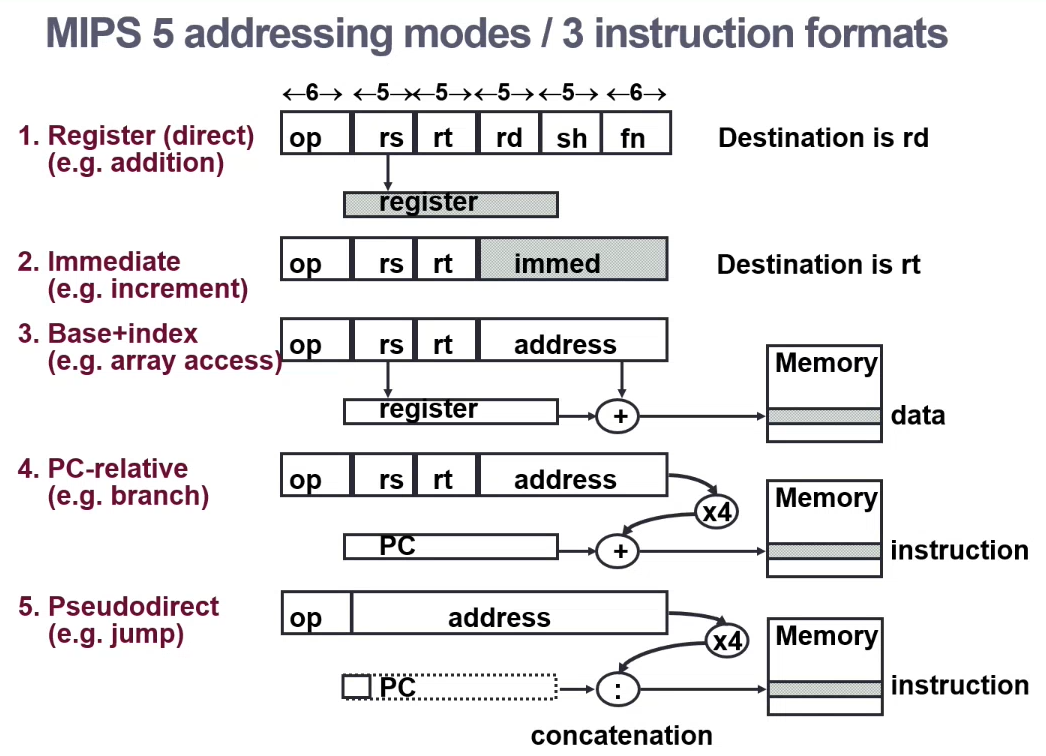Introduction to ISA
Contents
This course uses the MIPS ISA
Overview of a Computer System
A computer system is a combination of both hardware and software components
Application software (written for end users) are created in a high-level language (HLL). HLL allows the code to be portable between platforms, without tying the code to a specific working environment.
System software such as the compiler translate the HLL code into machine code, which is code specific to a certain platform (i.e. ARM, MIPS, amd64, x86). The operating system provides a universal framework for applications to use in a systematic and fair manner - handling I/O, memory, storage, and other resource scheduling tasks.
Hardware such as the processor, memory modules and I/O controllers interact with the software to carry out tasks
Execution Cycle

What is "Computer Architecture"
"Computer architecture, like other architecture, is the art of determining the needs of the user of a structure and then designing to meet those needs as effectively as possible within economic and technological constraints." - Frederick P. Brooks
ISA (Instruction Set Architecture)
The ISA is the interface between the hardware and software of a computer system. It defines the attributes and functions implemented by hardware that will be used by the software programmer.
A family of machines can often share a basic ISA - i.e the Intel x86 family
Modern ISAs
- CISC (Complex Instruction Set Computer) - VAX, PDP-11, x86, 6800
- RISC (Reduced Instruction Set Computer) - SPARC, PowerPC, RISC-V, AVR, ARM, MIPS
Machine Organisation
Machine organisation refers to how the ISA is actually implemented.
i.e. is there an actual multiplier unit for a multiply instruction; is it implemented with combinational or sequential method? (or other?)
Instruction Set Architecture

Goal: The instruction set should be easy to implement, good for performance, and possibly more
Design Principles:
- Simplicity favours regularity
- Smaller is faster
- Good design demands a compromise
- Make the common case fast
An Example - MIPS

General Purposes Registers
Registers are data storage locations that have faster performance than memory, and require less bits to target its address (compared to a memory address)
Addresses
Big Endian - Most significant byte stored at the end - most modern systems use this
Little Endian - Least significant byte stored at the end
Alignment - Words fall on addresses that are multiples of their size
Addressing Modes

Which Mode Should I Implement
idk analyse and profile them (but actually)

Instruction Format
- Varied - each instruction uses its own required width
- Fixed - all instructions have the same width
- Hybrid - instructions are divided into groups which each require a different fixed width
Design Choices
- If code size is most important, use variable width instructions.
- If performance is most important, use fixed width instructions
This course uses the MIPS ISA
MIPS
- RISC ISA
- All instructions are of 32 bits
- 3 instruction format types
- Arithmetic and logic operations are always performed on registers
- 32x 32-bit integer registers
- 32x 32-bit floating point registers
- Single address mode when accessing data in memory (base + displacement)
- Simple branch conditions (eq, ne)
Registers
R-Type (Register)

e.g. add $1, $2, $3
I-Type (Immediate)

e.g. addi $1, $2, 100
J-Type (Jump)

e.g. j 1000
